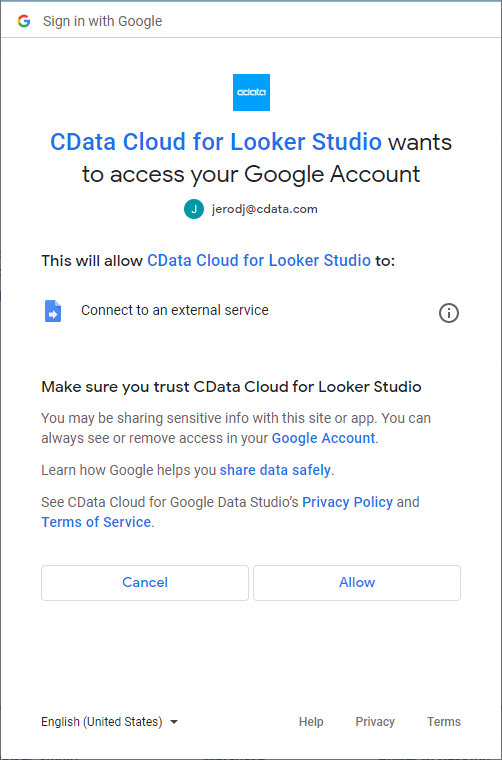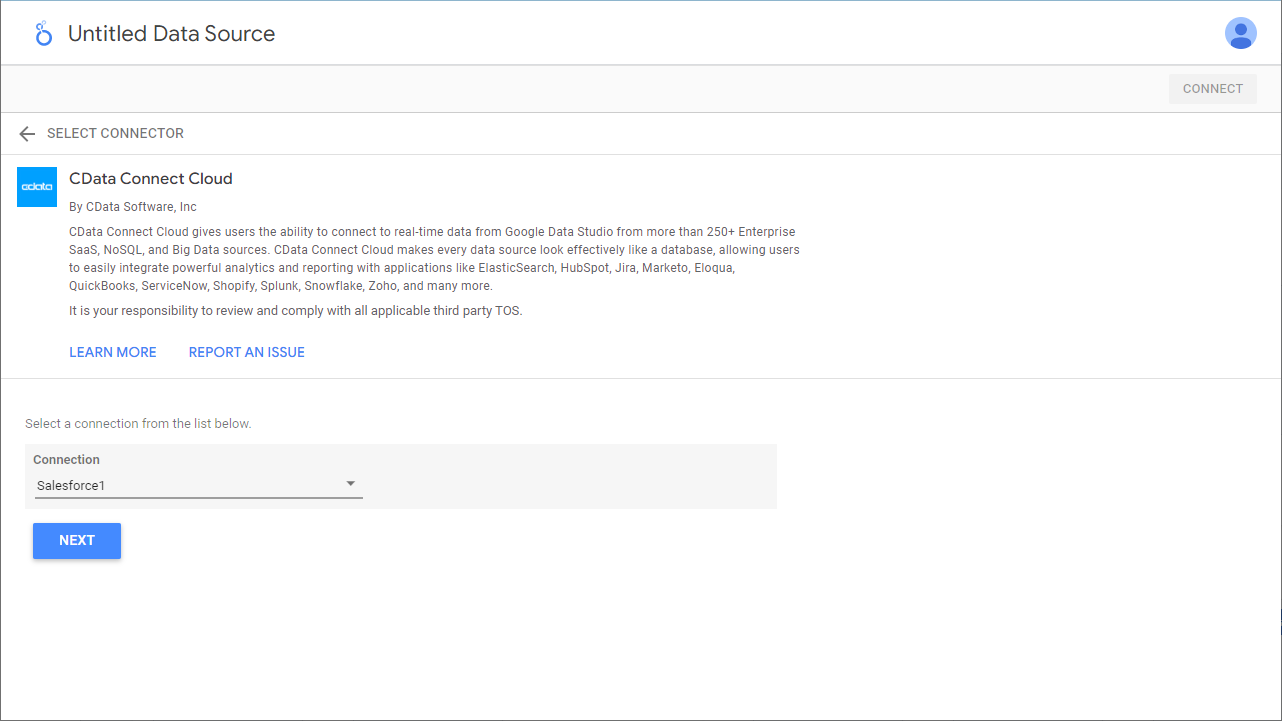Discover how a bimodal integration strategy can address the major data management challenges facing your organization today.
Get the Report →Create Reports from Paylocity Data in Looker Studio
Use CData Connect Cloud to gain access to live Paylocity data and create custom reports in Looker Studio.
Looker Studio, formerly known as Google Data Studio, empowers users to craft customized reports featuring data visualizations that can be shared with clients while reflecting your brand identity. When combined with CData Connect Cloud, you gain immediate cloud-to-cloud access to Paylocity data to create visualizations, dashboards, and more. This article provides step-by-step instructions on establishing a virtual database for Paylocity and generating reports from Paylocity data within Looker Studio.
CData Connect Cloud offers a seamless cloud-to-cloud interface tailored for Paylocity, making it straightforward to construct reports directly from live Paylocity data within Looker Studio without the need for data replication. As you create visualizations, Looker Studio generates queries to retrieve data. With its inherent optimized data processing capabilities, CData Connect Cloud efficiently channels all supported query operations, including filters, JOINs, and more, directly to Paylocity. This leverages server-side processing to swiftly provide the requested Paylocity data.
This article requires a CData Connect Cloud instance and the CData Connect Cloud Connector for Looker Studio. Get more information on the CData Connect Cloud and sign up for a free trial at https://www.cdata.com/cloud.
Configure Paylocity Connectivity for Looker Studio
Connectivity to Paylocity from Looker Studio is made possible through CData Connect Cloud. To work with Paylocity data from Looker Studio, we start by creating and configuring a Paylocity connection.
- Log into Connect Cloud, click Connections and click Add Connection
![Adding a Connection]()
- Select "Paylocity" from the Add Connection panel
![Selecting a data source]()
-
Enter the necessary authentication properties to connect to Paylocity.
Set the following to establish a connection to Paylocity:
- RSAPublicKey: Set this to the RSA Key associated with your Paylocity, if the RSA Encryption is enabled in the Paylocity account.
This property is required for executing Insert and Update statements, and it is not required if the feature is disabled.
- UseSandbox: Set to true if you are using sandbox account.
- CustomFieldsCategory: Set this to the Customfields category. This is required when IncludeCustomFields is set to true. The default value for this property is PayrollAndHR.
- Key: The AES symmetric key(base 64 encoded) encrypted with the Paylocity Public Key. It is the key used to encrypt the content.
Paylocity will decrypt the AES key using RSA decryption.
It is an optional property if the IV value not provided, The driver will generate a key internally. - IV: The AES IV (base 64 encoded) used when encrypting the content. It is an optional property if the Key value not provided, The driver will generate an IV internally.
Connect Using OAuth Authentication
You must use OAuth to authenticate with Paylocity. OAuth requires the authenticating user to interact with Paylocity using the browser. For more information, refer to the OAuth section in the Help documentation.
The Pay Entry API
The Pay Entry API is completely separate from the rest of the Paylocity API. It uses a separate Client ID and Secret, and must be explicitly requested from Paylocity for access to be granted for an account. The Pay Entry API allows you to automatically submit payroll information for individual employees, and little else. Due to the extremely limited nature of what is offered by the Pay Entry API, we have elected not to give it a separate schema, but it may be enabled via the UsePayEntryAPI connection property.
Please be aware that when setting UsePayEntryAPI to true, you may only use the CreatePayEntryImportBatch & MergePayEntryImportBatchgtable stored procedures, the InputTimeEntry table, and the OAuth stored procedures. Attempts to use other features of the product will result in an error. You must also store your OAuthAccessToken separately, which often means setting a different OAuthSettingsLocation when using this connection property.
![Configuring a connection (Salesforce is showe)]()
- RSAPublicKey: Set this to the RSA Key associated with your Paylocity, if the RSA Encryption is enabled in the Paylocity account.
- Click Create & Test
- Navigate to the Permissions tab in the Add Paylocity Connection page and update the User-based permissions.
![Updating permissions]()
With the connection configured, you are ready to connect to Paylocity data from Looker Studio.
Visualize Live Paylocity Data from Looker Studio
The steps below outline connecting to CData Connect Cloud from Looker Studio to create a new Paylocity data source and build a simple visualization from the data.
- Log into Looker Studio, click data sources, create a new data source, and choose CData Connect Cloud Connector.
- Click Authorize and allow access to your Google account.
![Granting permissions to the Connector]()
- Click Authorize to authenticate with your CData Connect Cloud instance
![Authenticating with CData Connect Cloud]()
- In the CData Connect Cloud Connector in Looker Studio select a Connection (e.g. Paylocity1) and click Next
![Selecting a Connection]()
- Select a Table (e.g. Employee) or use a Custom Query and click Connect to continue
![Selecting a Table]()
- If needed, modify columns, click Create Report, and add the data source to the report.
- Select a visualization style and add it to the report.
- Select Dimensions and Measures to customize your visualization.
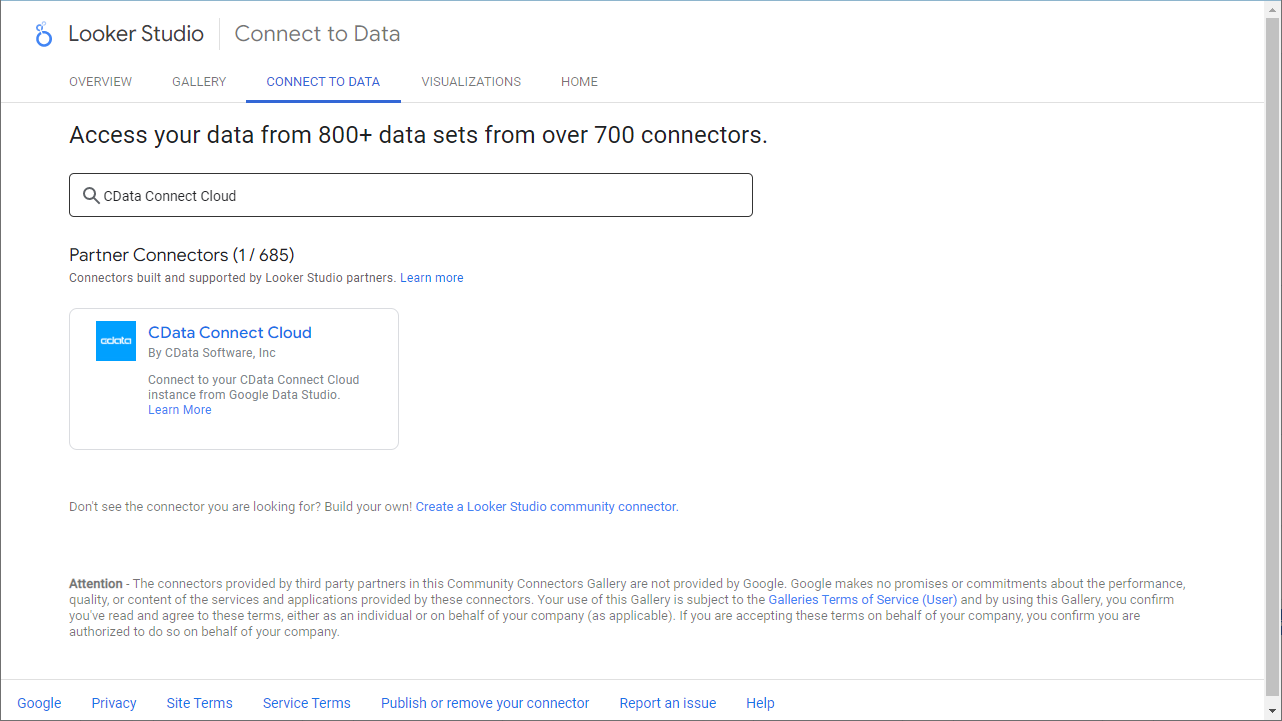
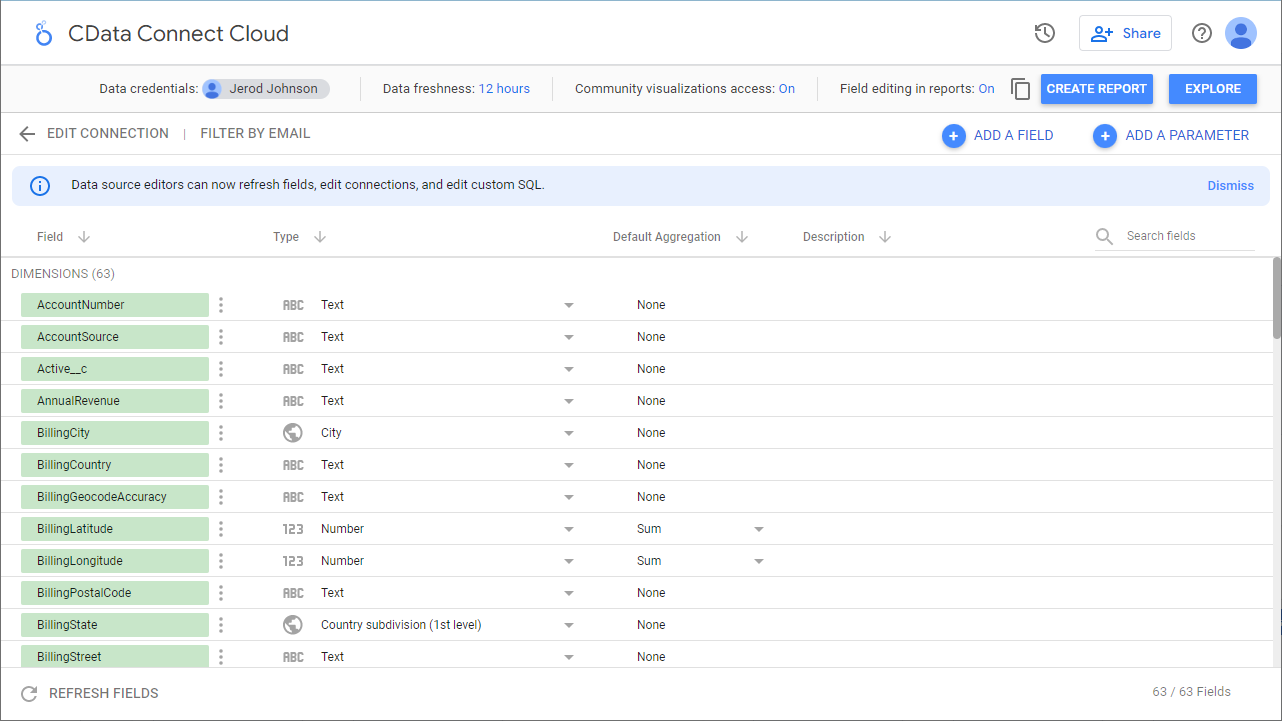
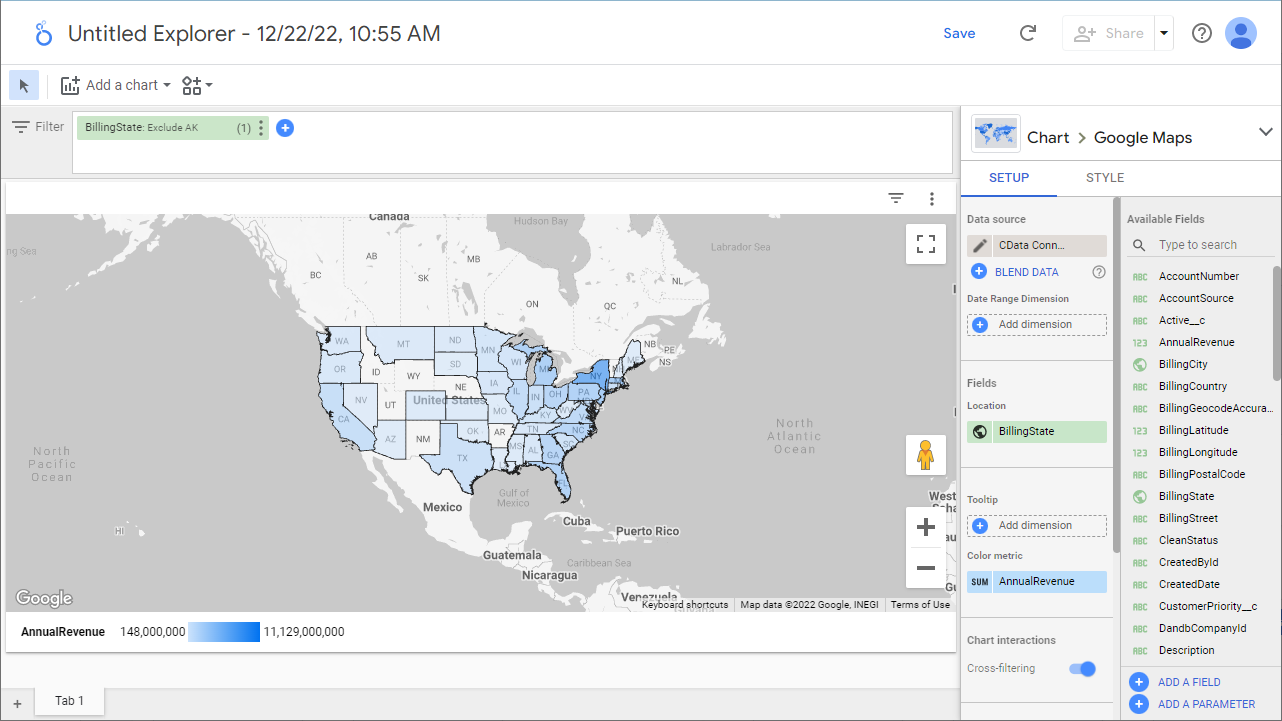
Live Access to Paylocity Data from Cloud Applications
Now you have a direct, cloud-to-cloud connection to live Paylocity data from your Looker Studio workbook. You can create more data sources and new visualizations, build reports, and more — all without replicating Paylocity data.
Try CData Connect Cloud and get real-time data access to 100+ SaaS, Big Data, and NoSQL sources directly from your cloud applications.










